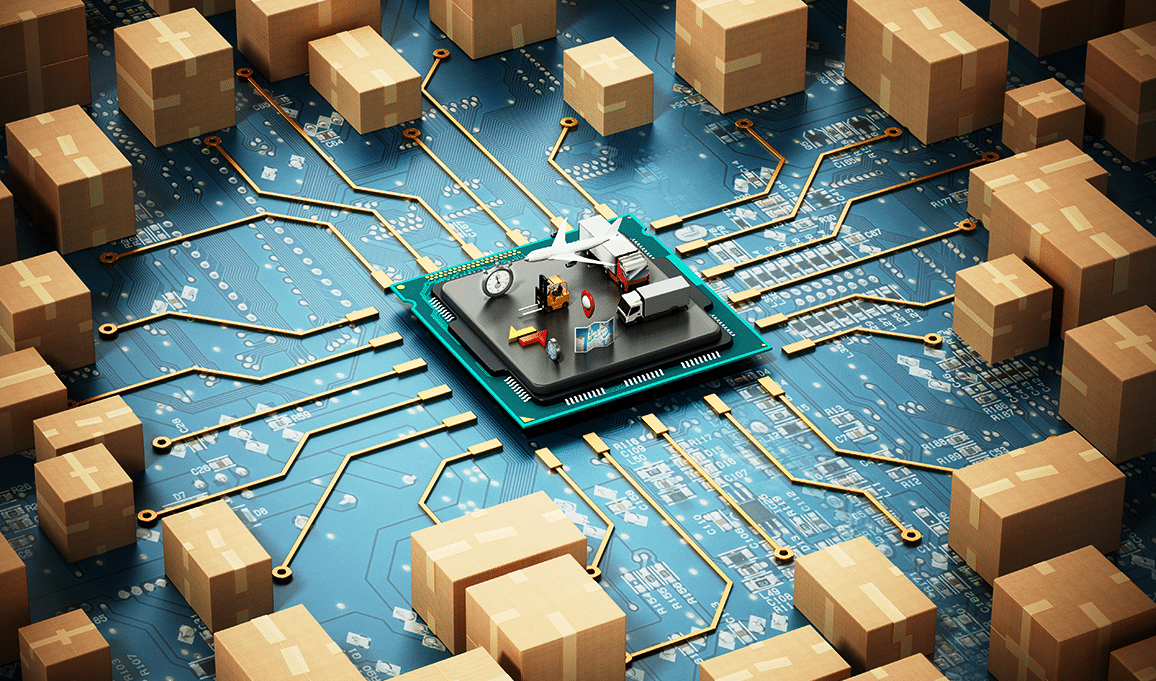With the rise of e-commerce and the proliferation of digital solutions, online shopping has increase exponentially in recent years, a trend that is only set to continue in the future. As more and more people are looking to ship items across the world, businesses are becoming ever more dependent upon order fulfillment technology.
Order fulfillment technology can be hugely influential. The technology enables businesses to sustain good relationships with customers, safeguard their stock and work more efficiently. Without utilizing the right order fulfillment technology, businesses risk the damages that come with mismanaging order fulfillment processes. However, in order to receive the full benefit from the available technology, businesses first need to understand what technology is available.
The Role of Technology in Order Fulfilment Processes
Technology is influencing every step of the order fulfillment process, from managing inventories to last-mile delivery. In fact, business technology today is holistically influencing order fulfillment as digital marketing technology can motivate the purchases that spark the order fulfillment processes.
Understanding what technology is available is the first and most critical step for business owners to improve the efficiency and return on their order fulfillment processes. The list below outlines some of the most valuable order fulfillment technologies available today.
Inventory Management Software
The influence of order fulfillment technology begins onsite before an order has even been packaged and processed. Since businesses usually have many of their assets tied up in stock, poor inventory management can cause potentially devastating problems.
Poor inventory management can lead to an imbalanced inventory, which means that it is more likely stock will become damaged. A badly organized stock wastes time and damages productivity as it was more difficult for staff to locate stock. Outdated inventory takes up precious real estate, wasting your business money. However, the effects of poor inventory management are not only felt internal. Poor inventory management can also damage your relationships with customers as orders are routinely late and arrive; when stock arrives, it is likely damaged or of lower quality.
The best solution to avoid all of the problems that are associated with poor inventory management is to use inventory management software. Not only will this help you to avoid poor inventory management, but it can also facilitate increases in productivity and efficiency. The cloud-based system digitalizes the management processes, eliminating the possibilities of human error. The system monitors incoming orders in real-time, which means that it can provide customers with accurate updates on progress, improving customer satisfaction rates.
Using inventory management software not only helps you to manage your stock better, process orders, and maintain relationships with customers, but it provides you with useful data. Access to accurate data enables you to make more informed insights that can influence product development. Better understanding customer trends, habits, and preferences help you to prioritize effectively when completing product development.
Load Board Technology
Load board technology is democratizing the possibilities for order fulfillment processes. As every business owner will tell you, it is difficult always to predict the rises and falls of demand. This can mean that business owners are sometimes left struggling with order fulfillment in a particularly busy period. Specifically, delivery processes can be difficult in periods of high demand.
Rather than having to outsource to a costly order fulfillment company last minute, businesses can use load board technology. This does not even rely on you purchasing costly equipment or software; you can just go online to use Truckstop.com. Gaining access to a huge database of delivery solutions at a range of sizes and prices. This can help businesses owner ensure they are always able to provide the best service for their customers.
Warehouse Robotics
Unlike the other technological solutions outlined in this guide, this technology is not accessible to all businesses due to its high price. However, it is important to mention warehouse robotics as they are becoming increasingly influential. It is also understood that the price of technology like this will become more accessible to smaller businesses in the coming years as the value of the warehouse robotics market is expected to grow at a CAGR of 118% from 2017 to 2022.
There are several different types of warehouse robotics available, all offering different degrees of functionality and purposes. For example, the automated storage and retrieval systems automate inventory processes, specifically by processing deliveries and returns. Warehouse robotics can be used to aid in almost every process involved in warehouse management, from picking products to packing orders.
Big companies like Amazon have been using warehouse robotics to improve efficiency and productivity for years. However, the new possibilities for warehouse robotics are becoming clear. Amazon recently launched two new warehouse workers; the robots, called Ernie and Bert, have been designed to improve worker safety. While small businesses might not yet be able to benefit from all the possibilities of robotics, it is a growing market that is set to become more accessible.
Customer Satisfaction
The purpose of much order fulfillment technology is to ensure that an order arrives with a customer in the expected time frame and a good condition. However, high-quality order fulfillment does not end the moment that a client receives their order. Customer satisfaction technology is vital to ensure that a customer receives the highest quality experience possible.
Studies have found that returns can cost online businesses a collective $550 billion every year. With the cost of receiving and processing returns so high, you must do all you can to keep down the chances of returns. Reducing the rate of returns not only helps you to save money in the short term but in the long run too. This is because loyal customers are much less likely to make a return than first-time customers. Moreover, a returning customer will, on average, spend ten times more per order than a first-time customer.
Using customer satisfaction technology is the first step to ensure that your return rates stay low and that you build strong relationships with your customers. It is these strong relationships that will motivate return purchases that facilitate business growth long term.







![[LISTS] Best Chat GPT App for iPhone – Can You Handle the Suspense? Best Chat GPT App for iPhone](https://www.techinpost.com/wp-content/uploads/Best-Chat-GPT-App-for-iPhone-324x235.png)
